For the next day I planned again a visit to a museum, but to start with I went to the Carnegie Hall first (7th Avenue between the 56th and 57th Streets). A couple of evenings before I walked there and noticed a very well lit building (it actually caught my eye that way), so I realised that this was the famous concert venue – Carnegie Hall. In addition to the lighting, the building also caught my attention with its renaissance architectural style which makes it stand out significantly in comparison to the surrounding modern buildings with glass and metal facades.
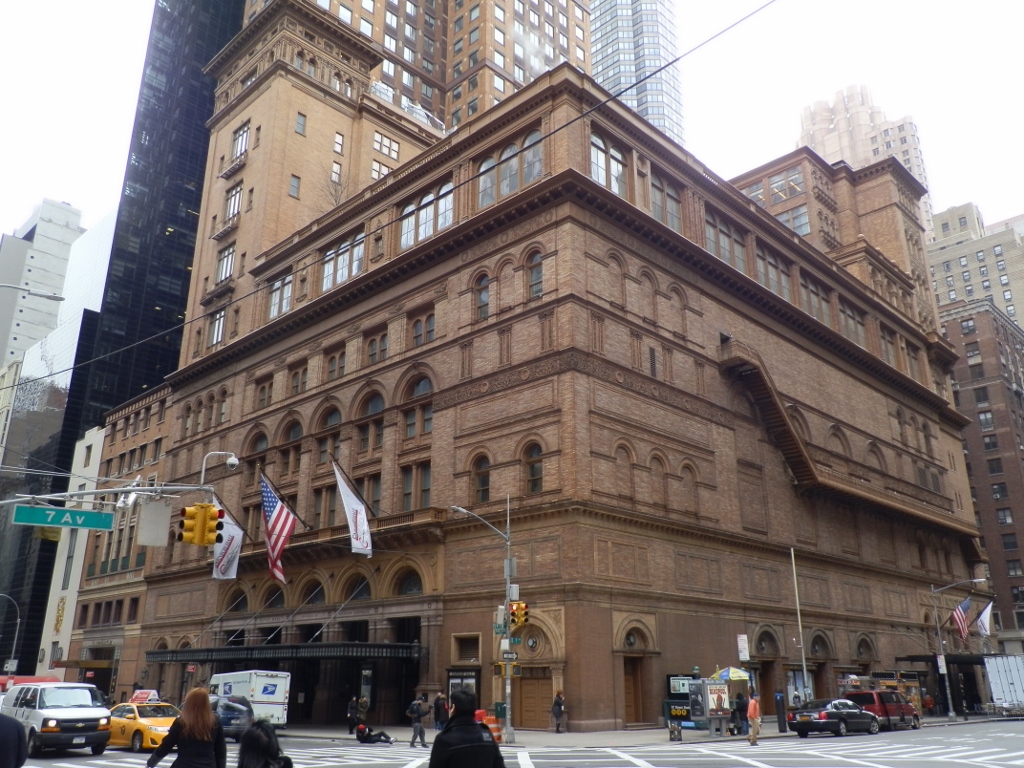 Carnegie Hall
Carnegie Hall
A little farther on the 57th Street, between the Park and the Madison Avenues, there is also a building which kept catching my eye these days, since it was new to me. As it turned out, it was not new only to me, since it had been finished in 2015. This is a very high and slender residential building which was, at the time it was finished, the third-tallest building in the United States and the tallest residential building in the world. Even in 2020, when I’m writing this text, it is still among the tallest buildings in the world and it has 85 floors. It is seen quite well in one of the photographs I have already published in part 2 of my stories and here it is again:
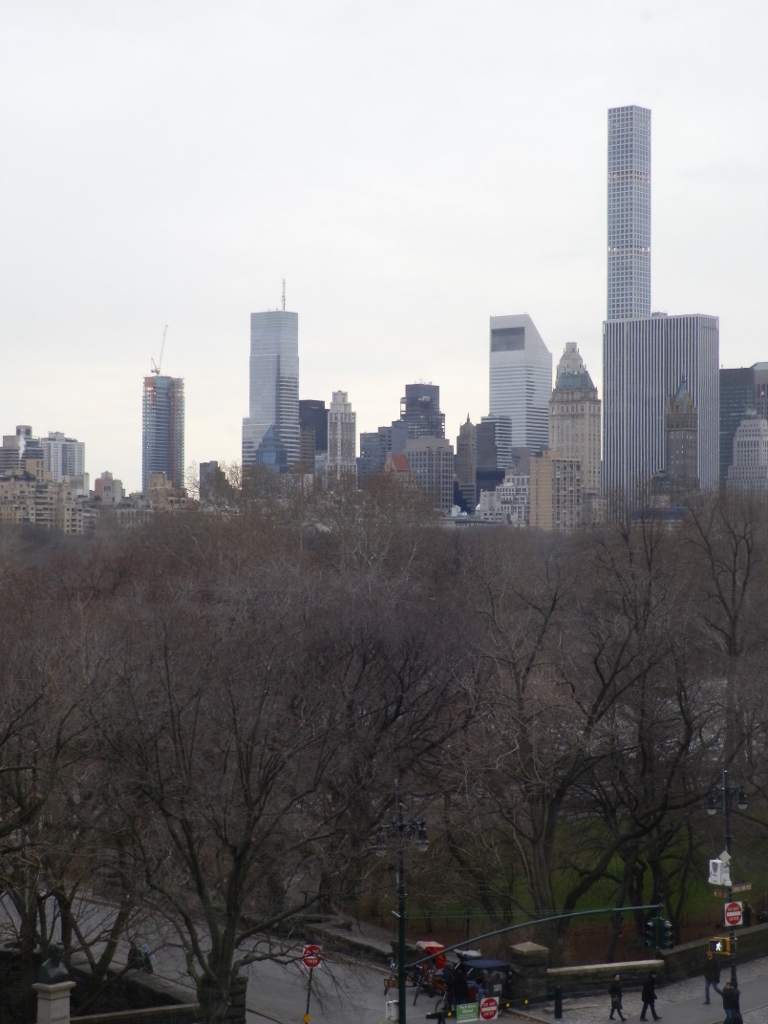 It is clear which building is tallest in this photo
It is clear which building is tallest in this photo
The photo above also shows another interesting building which I’m going to mention a little later. This is the Citigroup Center building. In the photo above, it is the second building to the left from the tallest building on the horizon.
But, while I was standing in the street near Carnegie Hall, admiring all these different buildings, I was thinking about the fact that no matter how much more I actually prefer nature to man-made things, I truly love walking around Manhattan marvelling at these huge structures. There is something in their enormous size, something not necessarily linked to their architectural style, which makes a really strong impression on me. This hugeness has its own attractiveness. At least for me. I’ve been many times in London and Paris, but these are cities with truly long histories that are reflected in the buildings that adorn most of these large world centres. I was also in Hong Kong which is modern, very new, with an even higher number of skyscrapers than New York and yet I don’t remember having such a strong impression stemming from the sheer size as I do in New York. Perhaps this is so because I was in New York several times (after Belgrade and London, I spent most of the days of my life in New York), so I’m a little more relaxed here than when I was in Hong Kong during four days I spent there. I don’t know. And yet, I do enjoy these semi-casual walks along the streets of Manhattan very much.
This enjoyment of mine is not disturbed even by the noise coming from the streets, including sirens such as the one of an ambulance that was passing by Carnegie Hall at the time when I was admiring the buildings of New York with particular concentration.
Not far from there, within the block created by the 5th and 6th Avenues, and the 53rd and 54th Streets, there is yet another museum which I wanted to visit during this stay in New York and this is the Museum of Modern Art or MoMA for short.
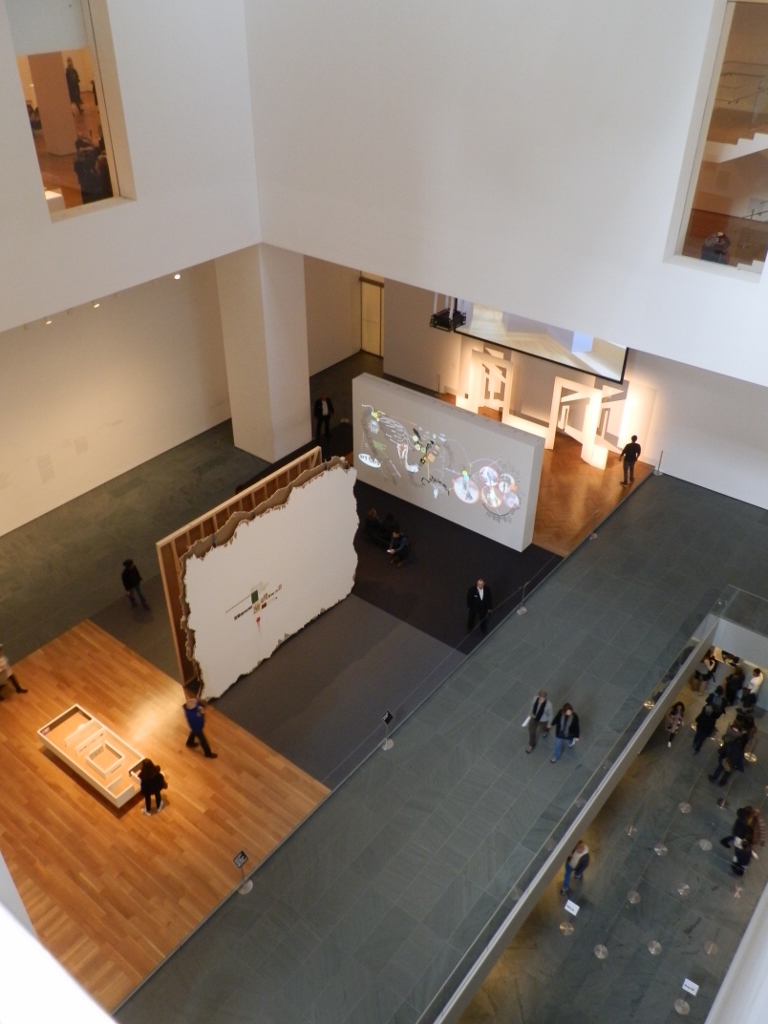 Architecture of the museum is in line with its nature
Architecture of the museum is in line with its nature
The museum exhibits the artwork created by famous Impressionists, as well as those that came after them.
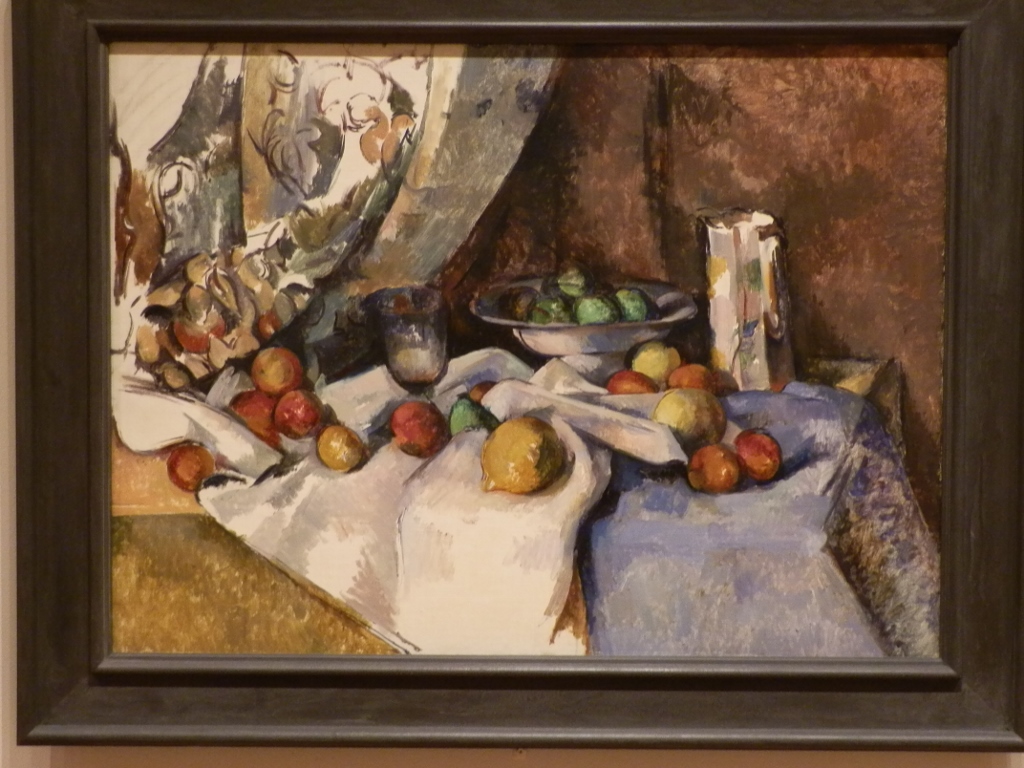 Paul Cézanne: Still Life with Apples
Paul Cézanne: Still Life with Apples
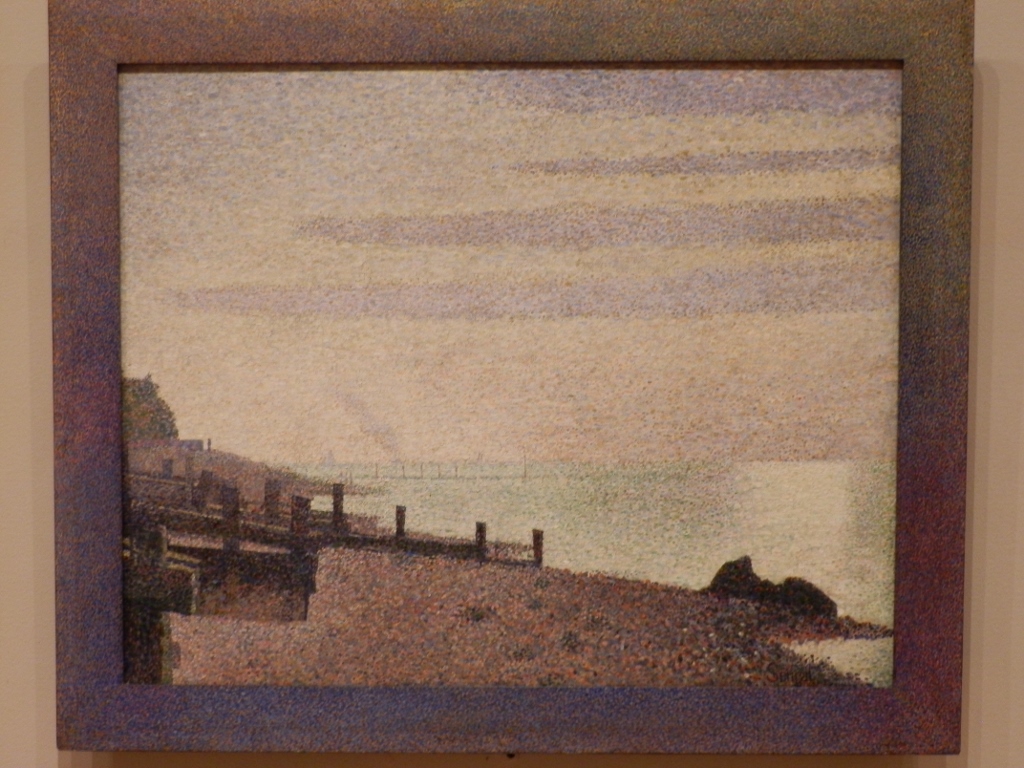 Georges-Pierre Seurat: Evening, Honfleur
Georges-Pierre Seurat: Evening, Honfleur
I found it interesting to see that the Seurat’s painting above came to the museum as a gift from a Mrs. Levy. Before, I have already mentioned the practice where individuals and institutions hand over to museums the artwork in their possession in order for those to be seen by as many people as possible. What also exists as practice among wealthy individuals and institutions is that they bequeath their artistic property, thus transferring the ownership to the museum. Then, by the rule, next to the sign displaying the name of the piece and of the author, the museum also displays information about how the actual piece came to the museum, as well as the name of the person or institution which bequeathed or loaned the piece, and sometimes there is only a discreet information that the piece comes from “a private collection.”
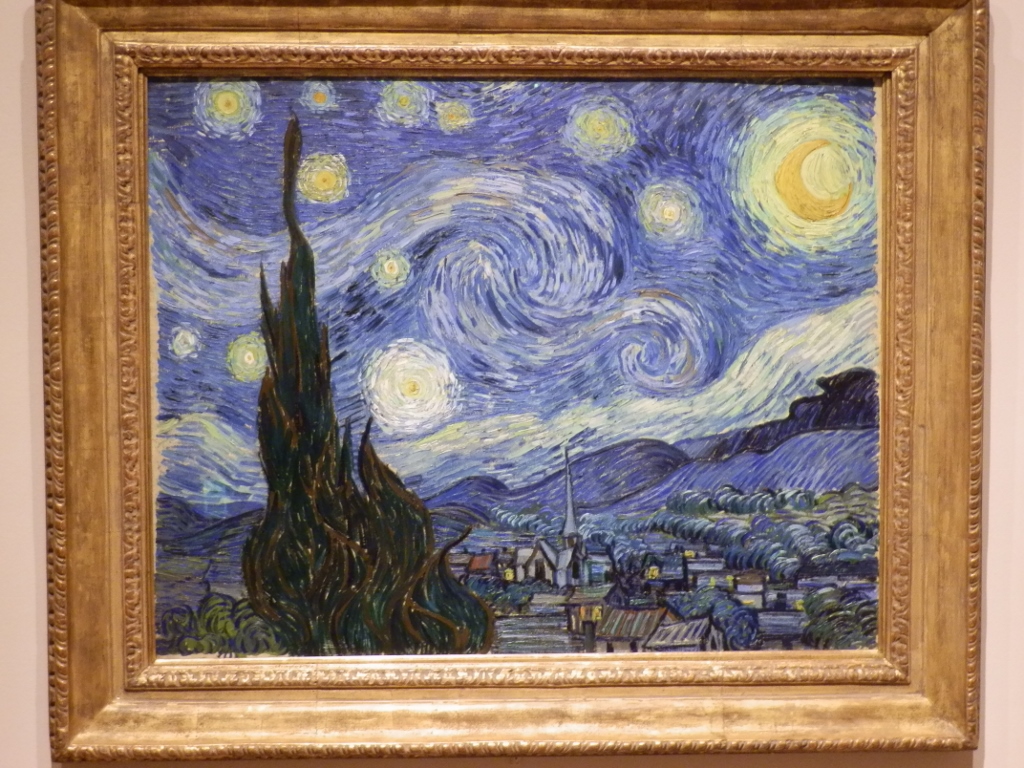 Vincent van Gogh: The Starry Night
Vincent van Gogh: The Starry Night
The artwork I’m showing here somehow goes chronologically and now we are moving to the time of the 20th century with everything that this century brought into the visual arts.
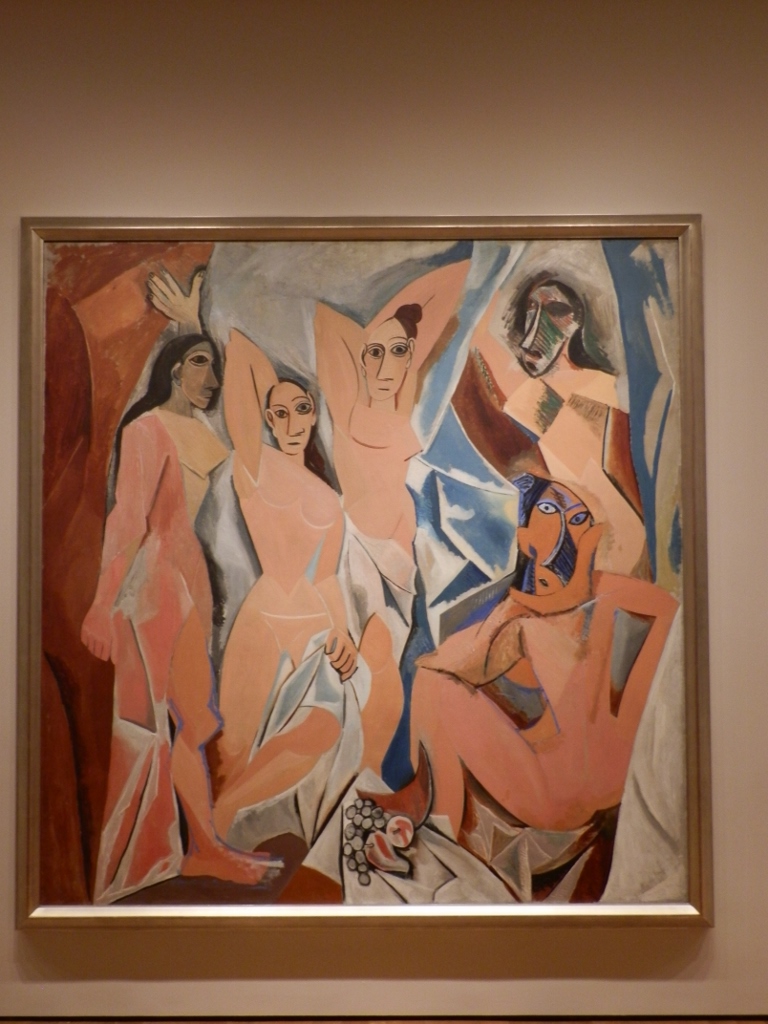 Pablo Picasso: Les Demoiselles d’Avignon
Pablo Picasso: Les Demoiselles d’Avignon
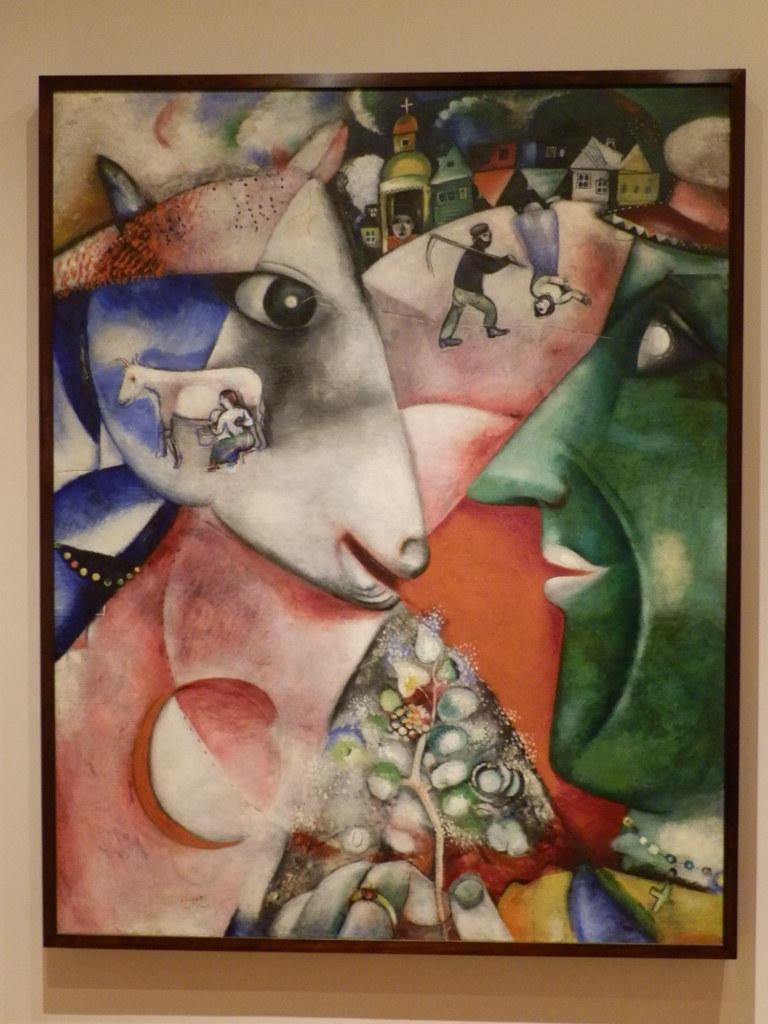 Marc Chagall: I and the Village
Marc Chagall: I and the Village
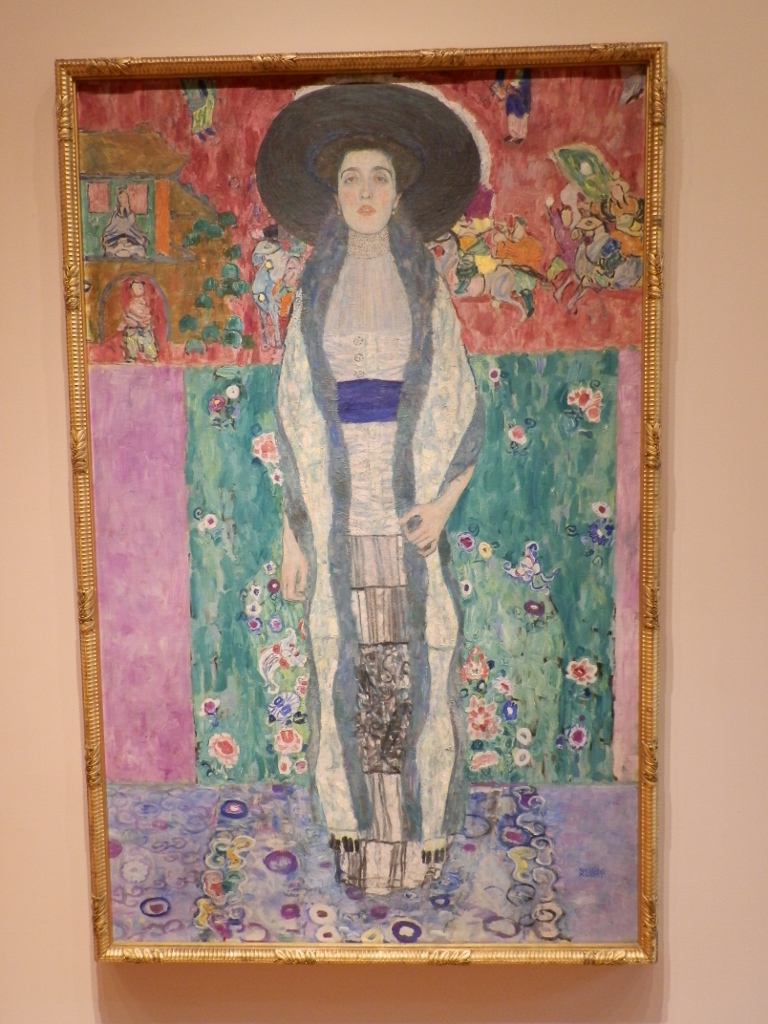 Gustav Klimt: Adele Bloch-Bauer II
Gustav Klimt: Adele Bloch-Bauer II
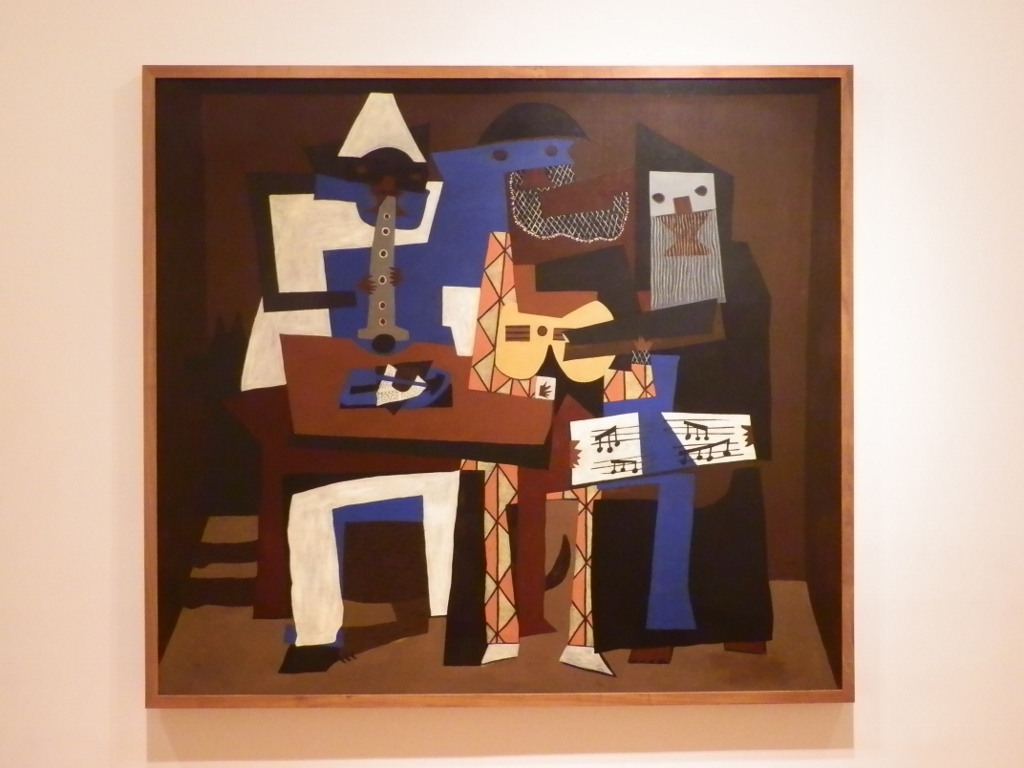 Pablo Picasso: Three Musicians
Pablo Picasso: Three Musicians
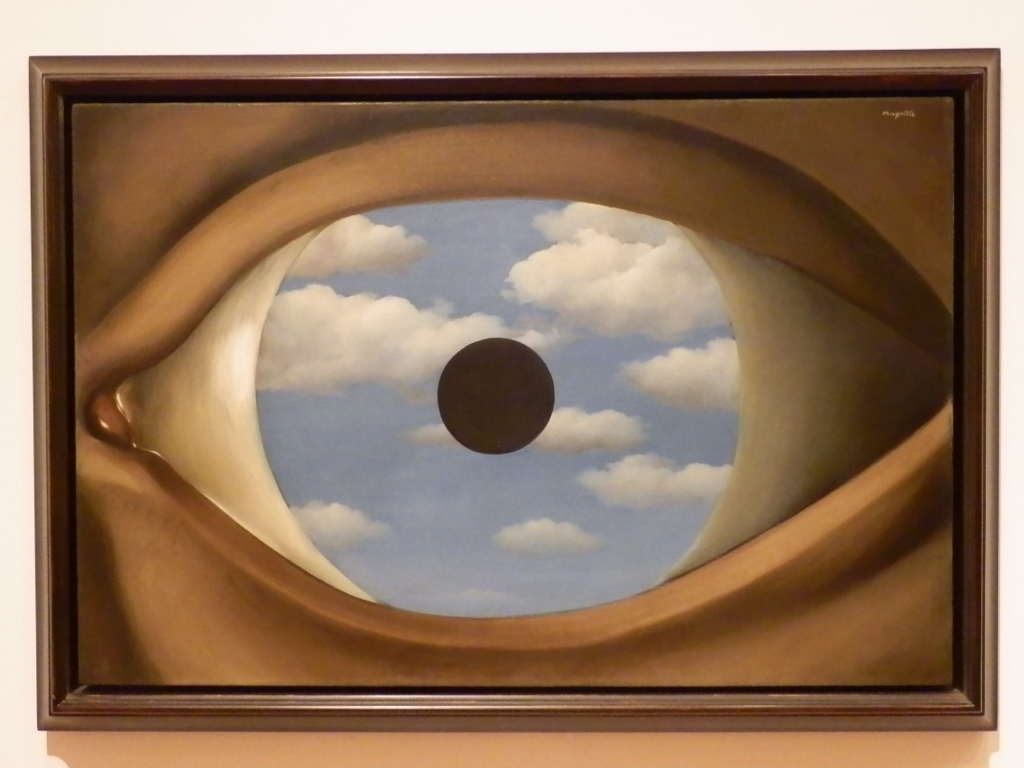 René Magritte: The False Mirror
René Magritte: The False Mirror
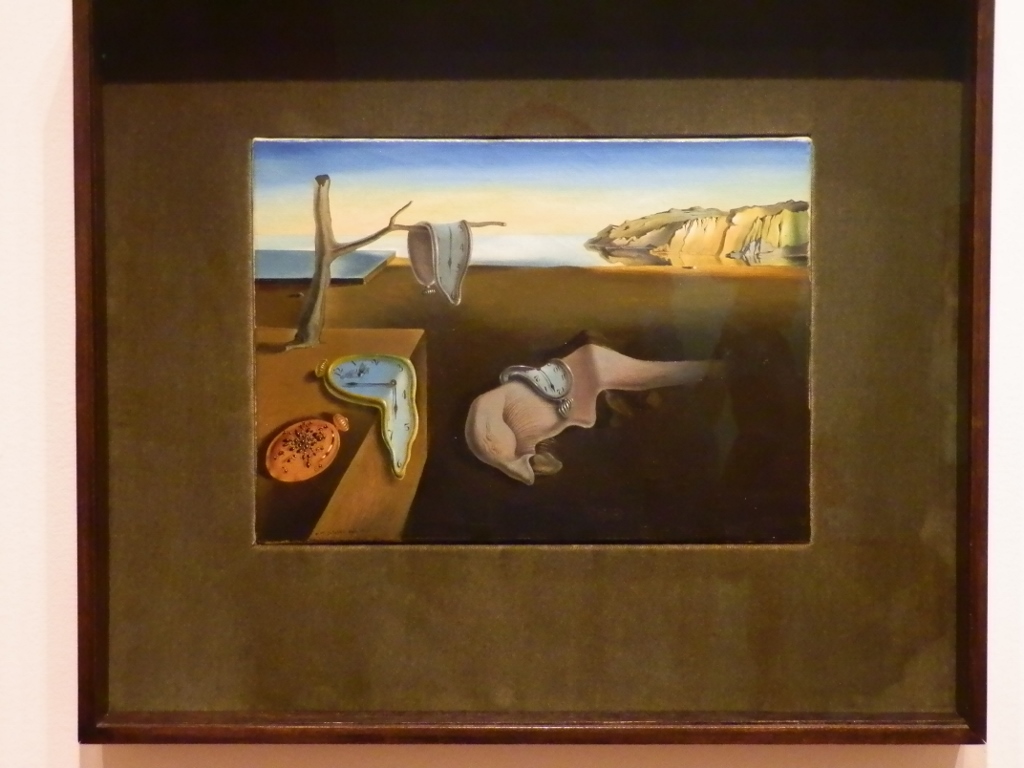 Salvador Dalí: The Persistence of Memory
Salvador Dalí: The Persistence of Memory
In addition to different Picasso’s paintings I saw while walking around the museum, I also visited a special exhibit with his numerous three-dimensional works – from pottery, through bronze sculptures and there was also the famous Bull’s Head:
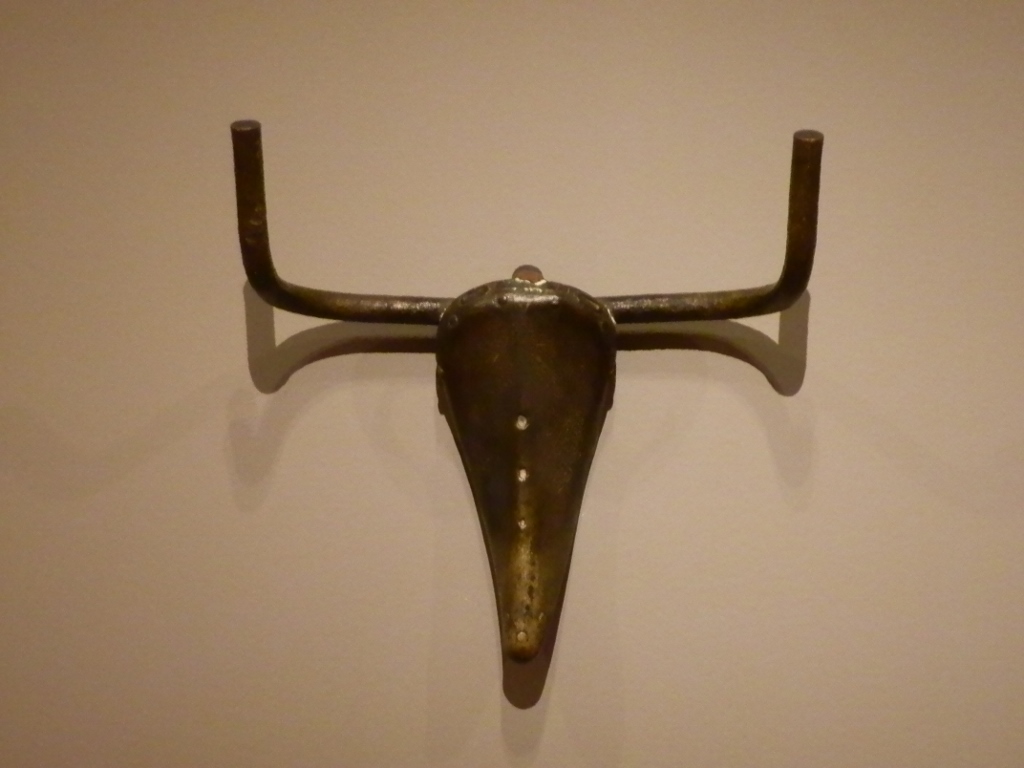 Pablo Picasso: Bull’s Head
Pablo Picasso: Bull’s Head
Needless to say, there are many “more modern” pieces at the museum.
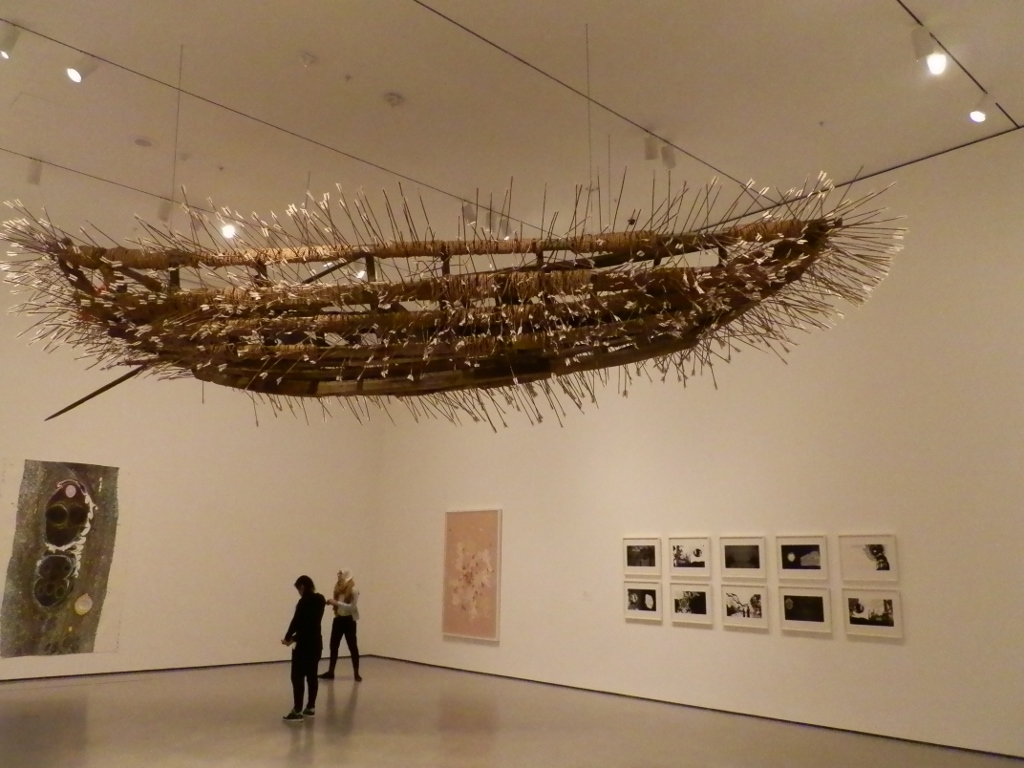 New York’s Museum of Modern Art
New York’s Museum of Modern Art
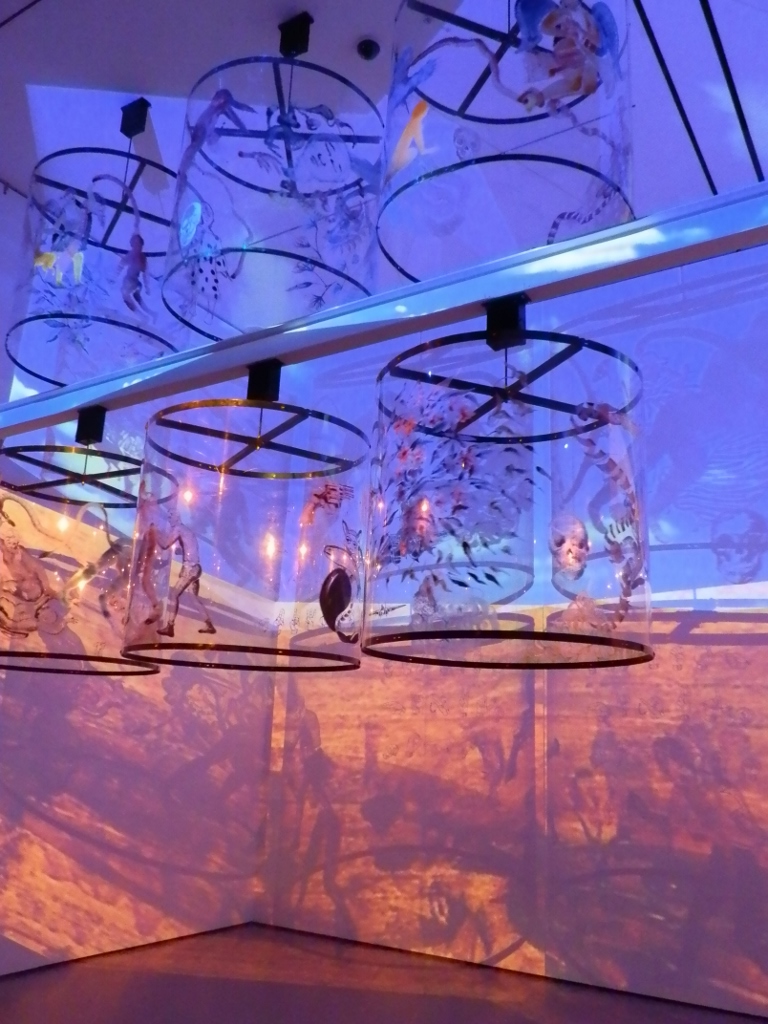 New York’s Museum of Modern Art
New York’s Museum of Modern Art
Although I must admit that the modern art often tends to be too distant from me, still there was some artwork here that I certainly liked, but I could never really explain what it was that I liked about it. Still, over time, I’ve learned to look at the modern art just like that – I look at it and then I either like what I see or I don’t, without any attempt at an analysis about what it is and why it is. For me – this is quite enough.
Along the way, while walking around the museum, I came across some places where I could look at the surroundings through a window or perhaps this was also just some – piece of art.
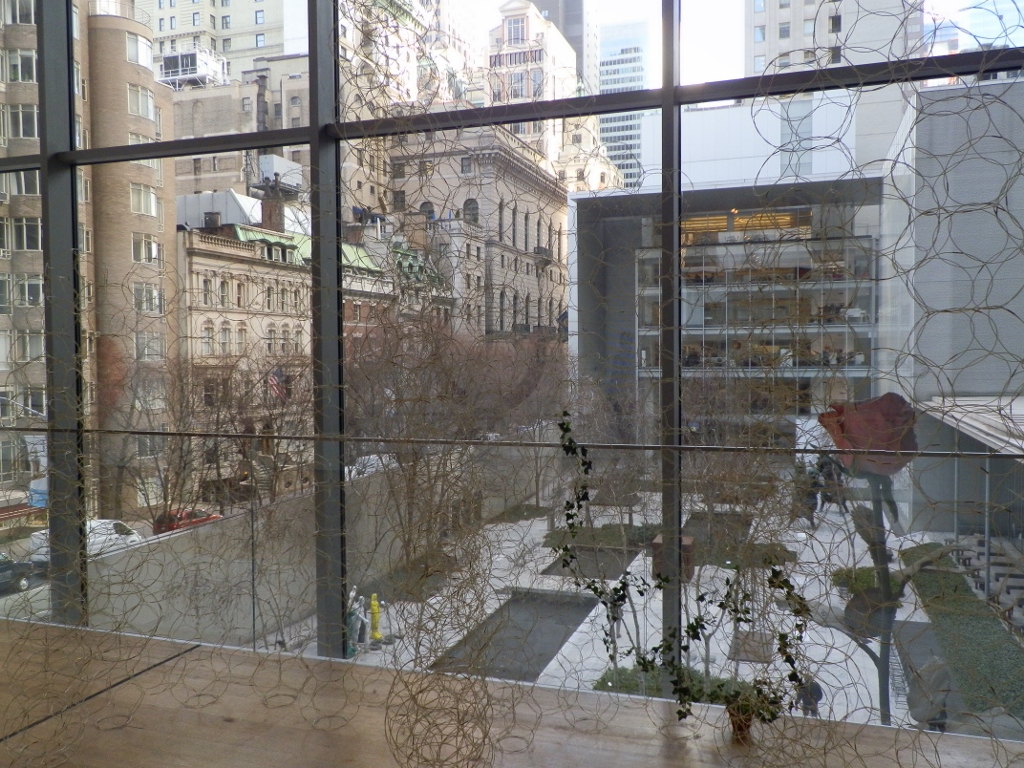 View through the windows of the MoMA
View through the windows of the MoMA
I exited the museum onto the 53rd Street and when I headed for the 5th Avenue, a little farther away (three avenues away), at the corner with the Lexington Avenue, I saw yet another building that stands out with its appearance and makes the skyline of New York, or rather that of Manhattan, so characteristic. This is the building I have already mentioned – the Citigroup Center building, although nowadays it is called after its address – 601 Lexington Avenue. The building was constructed in 1977 as the seat of the Citibank and it has only some negligible 59 floors. And yet, it is one of the most specific buildings when looking at Manhattan’s skyline from afar. The reason for this is that its top is arranged at a 45-degree angle, while at night it has specific lighting, which makes it very easy to spot. This can also be seen in a photo I have already published, so I’m repeating it now, too.
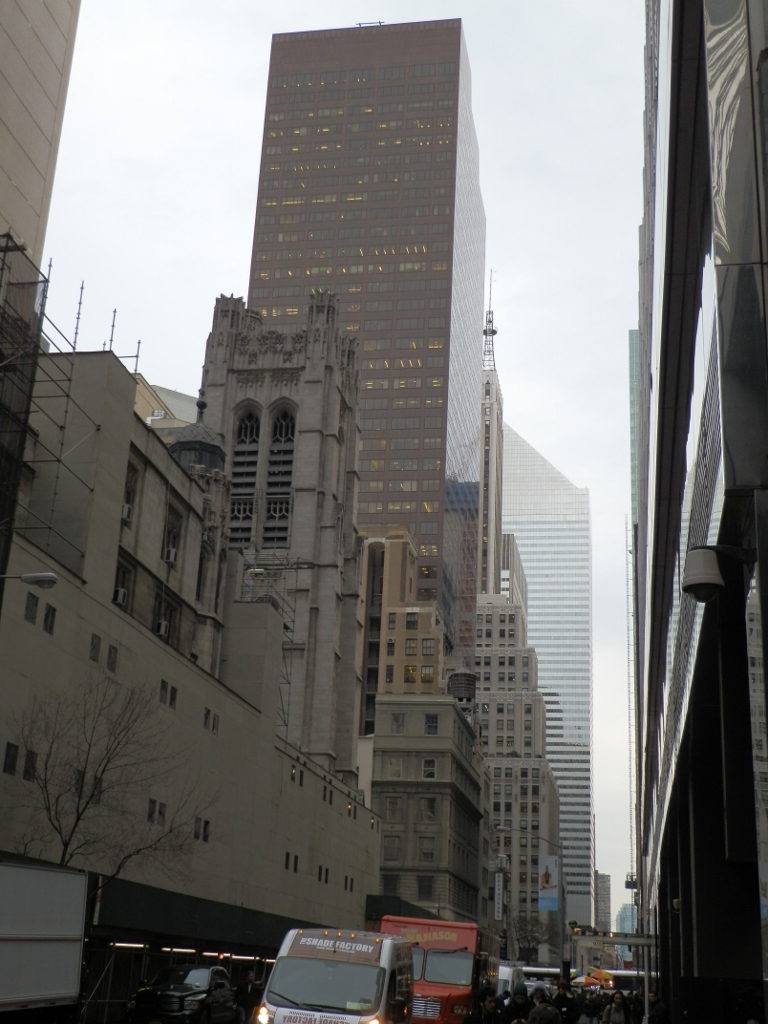 Citigroup Center Building – further down the street, the steep roof can be seen on its top
Citigroup Center Building – further down the street, the steep roof can be seen on its top
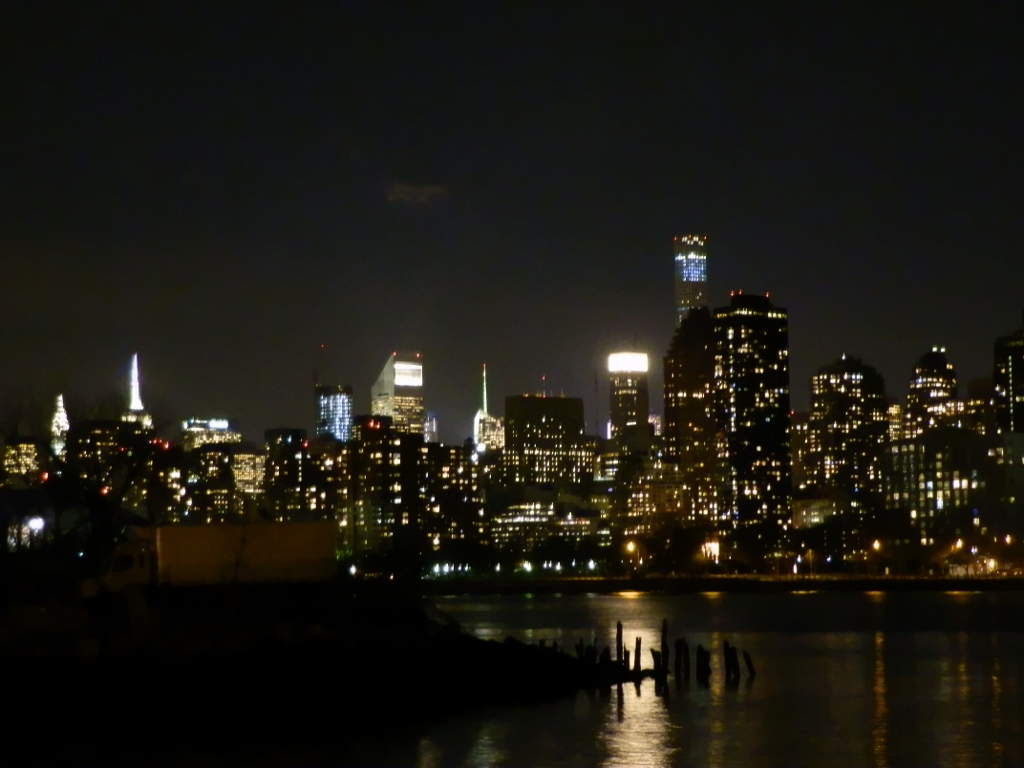 Citigroup Center Building at night, in the middle, a little to the left
Citigroup Center Building at night, in the middle, a little to the left
But, no matter how interesting this building looked, I did not continue in its direction and as soon as I reached the 5th Avenue I turned south or better-said southwest, looking back once again in the direction of the Central Park and seeing the Trump Tower, yet another of the famous buildings of New York.
A couple of streets further down the 5th Avenue, there is the well-known St. Patrick’s Cathedral. This is a catholic cathedral built in 1879 and it is one of the famous landmarks of New York.
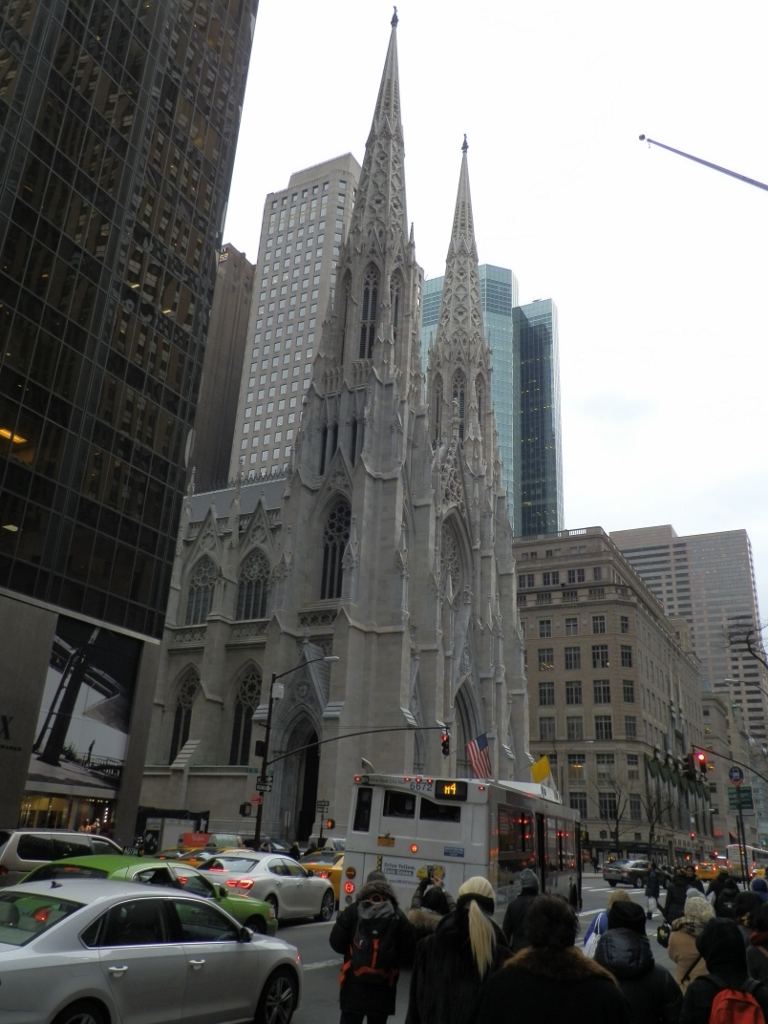 St. Patrick’s Cathedral
St. Patrick’s Cathedral
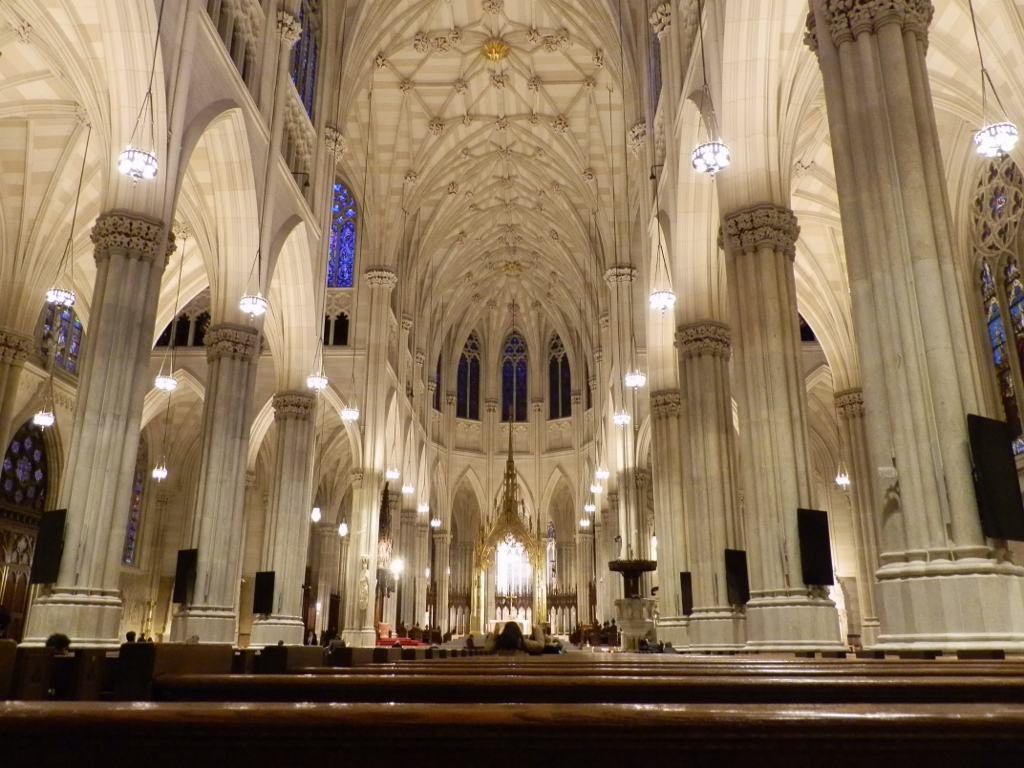 St. Patrick’s Cathedral, the interior
St. Patrick’s Cathedral, the interior
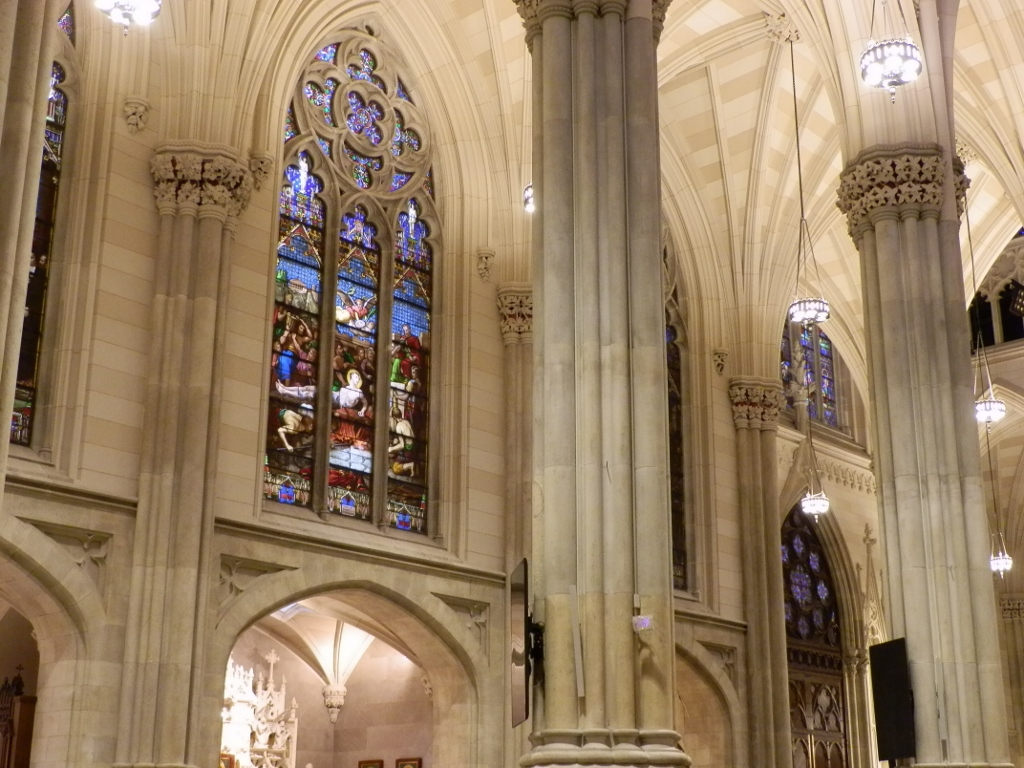 St. Patrick’s Cathedral, the interior
St. Patrick’s Cathedral, the interior
Right across the street from St. Patrick’s Cathedral there is Rockefeller Center or more accurately the statue of Atlas, as well as some parts of the Rockefeller Center which in fact consists of 19 commercial buildings and covers the area between the 48th and 51st Streets, as well as between the 5th and 6th Avenues. The total surface area covered by this centre is almost 9 hectares.
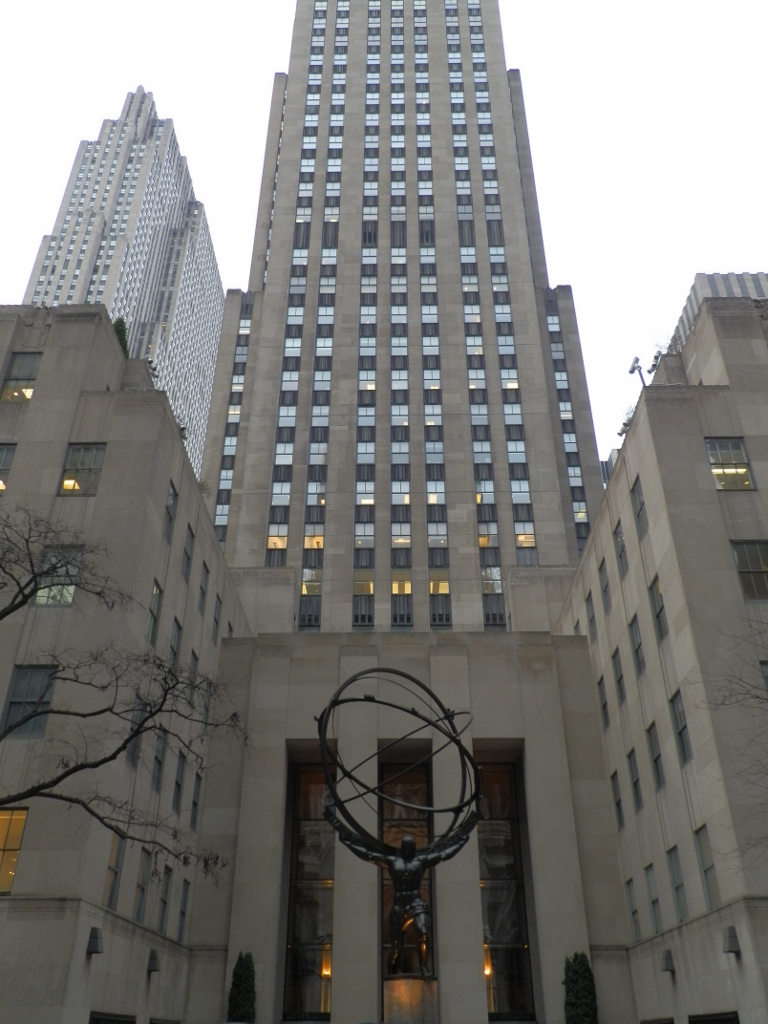 Rockefeller Center, the part with the statue of Atlas
Rockefeller Center, the part with the statue of Atlas
This huge complex has John Rockefeller Jr. to thank for its existence and the construction of the complex was completed in 1939.
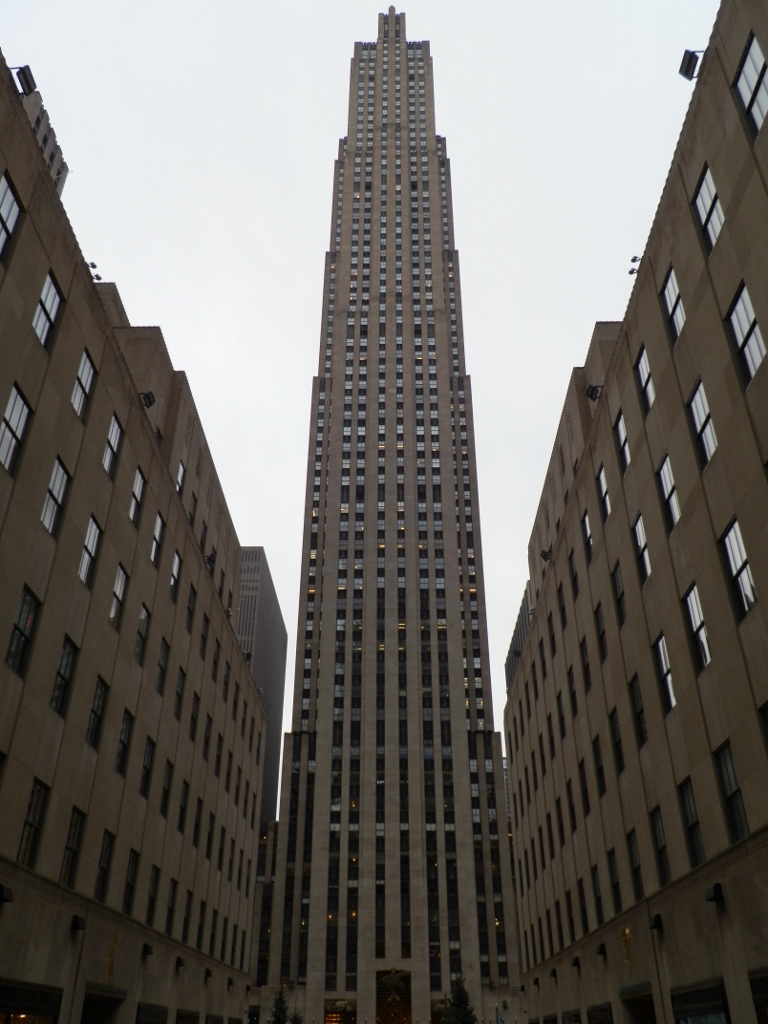 Rockefeller Center, the central building that has 66 floors
Rockefeller Center, the central building that has 66 floors
Between the 49th and 50th Streets, there is the Rockefeller Plaza, i.e., the central section of this huge complex and during winters, and certainly in January 2016 as well, there was the famous Ice Rink.
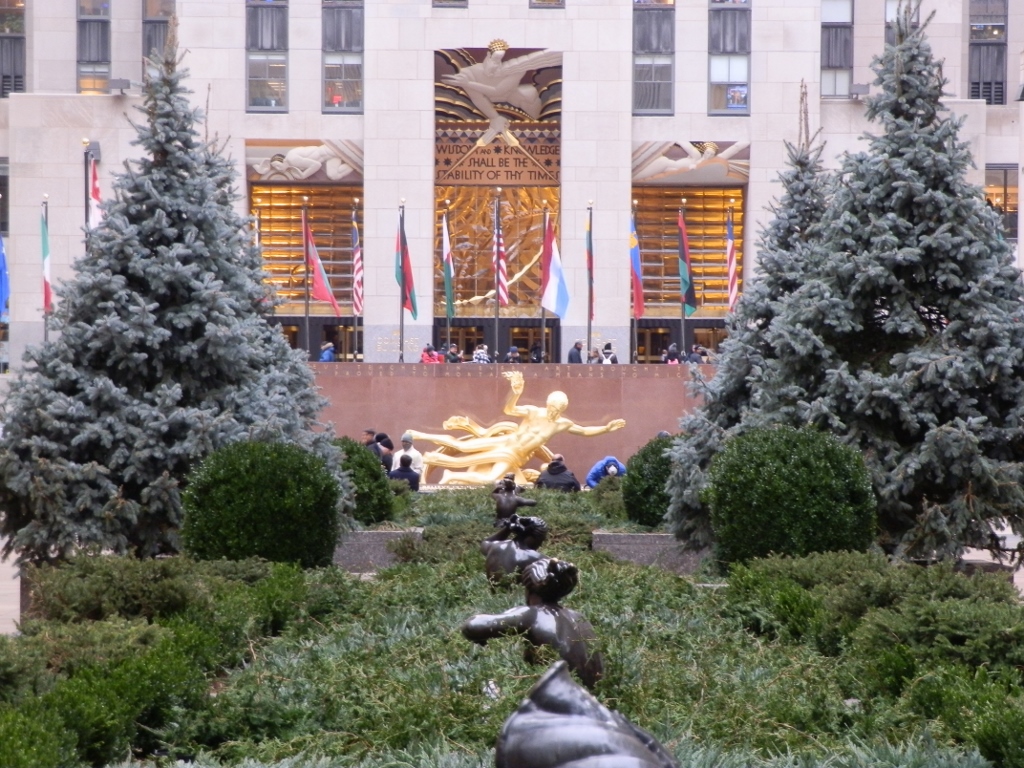 Rockefeller Center, central section that leads towards the central building and the ice rink in front of it
Rockefeller Center, central section that leads towards the central building and the ice rink in front of it
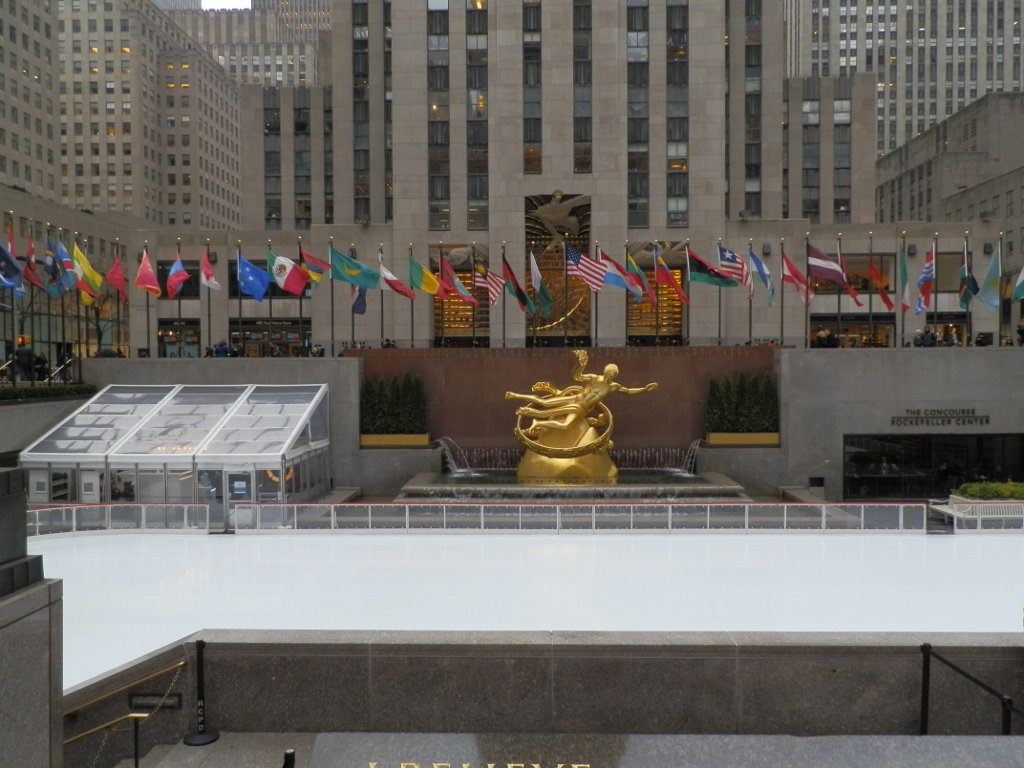 Rockefeller Center, public ice rink in front of the central building during a break
Rockefeller Center, public ice rink in front of the central building during a break
After a short time I spent watching the ice rink being prepared for the next opening, I continued to zigzag along the streets and so I came to Times Square, which is a popular expanse created in the place where Broadway cuts the 7th Avenue. This informal square is famous for being the venue for the public New Year’s celebration in New York, but it is even more famous for the huge number of light ads. Many of these ads deal with different products, but many also deal with numerous concerts and theatre performances since the broad area in the middle part of Manhattan that includes a total of 41 professional theatres is called the Broadway theatre or simply – Broadway.
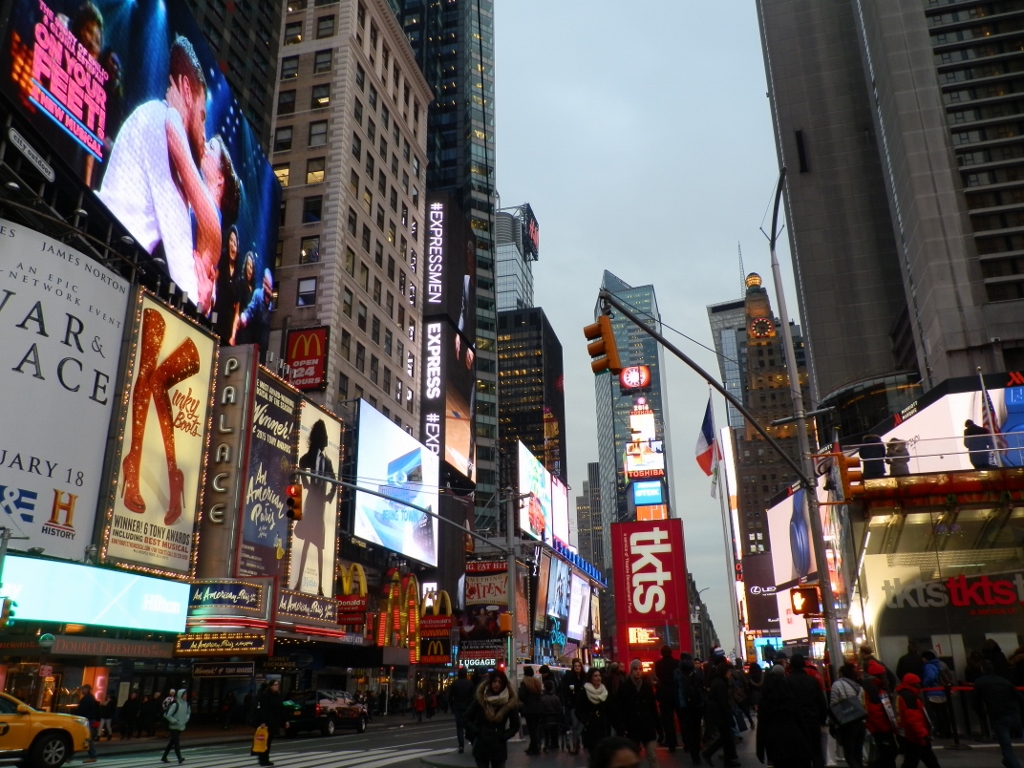 Times Square
Times Square
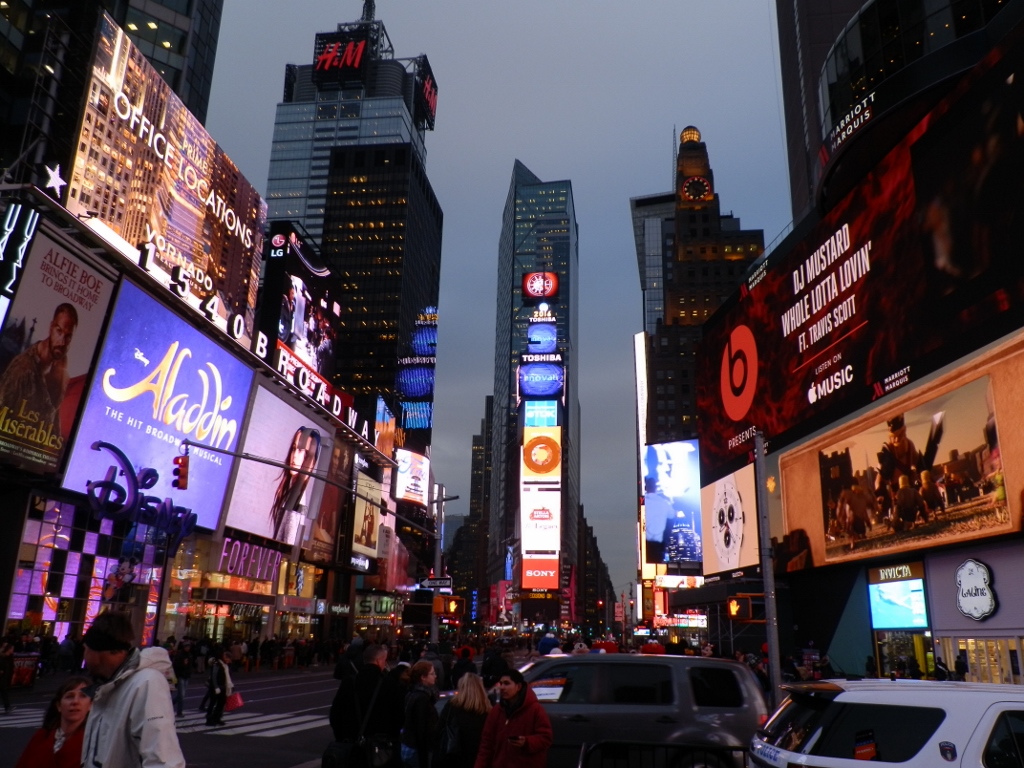 Times Square
Times Square
Then I returned to the 48th Street and continued to the east side of Manhattan in order to get to the Park Avenue and see from there yet another famous New York building and that is the MetLife Building, but from the opposite side in comparison to what could be seen in the photos I posted in the first part of my stories about New York. When you look at it from this side, in front of the MetLife Building there is a somewhat lower building which is used as office space by a large American corporation dealing with amusement parks. When I got to the Park Avenue, this lower building was beautifully lit in blue. But, this blue lighting did not last for long, since it was turned off. I guess it is lit like that only from time to time.
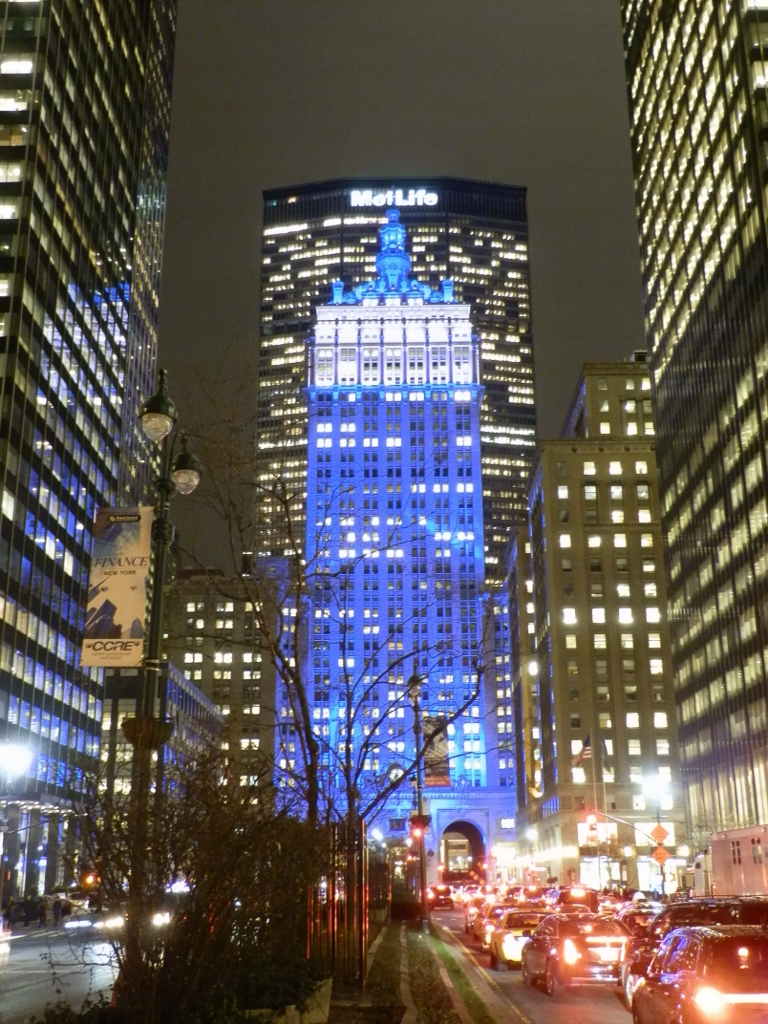 Six Flags Corporate Offices building lit in blue
Six Flags Corporate Offices building lit in blue
By the way, I admired these buildings standing on a refuge island on the Park Avenue right close to the famous Waldorf-Astoria hotel. I actually don’t care about this hotel at all, but I know that in 1896 its chef came up with a nice salad – Waldorf Salad.
Now I’m introducing a new thing into my travel stories and these are thematic recipes, all served in stoneware dishes which I make myself. So...
 My version of Waldorf Salad
My version of Waldorf Salad
Waldorf Salad
- 2 apples (one green, one red)
- 4 slightly bigger celery stalks
- 200 g red grapes
- 1 handful of walnuts
- juice of half a lemon
- 2 tablespoons of mayonnaise
- 2 tablespoons of sour cream
First, the walnuts should be roasted in a skillet on a stove, but one should be careful lest they burned.
Lemon juice should be freshly squeezed and kept handy, and then the apples are to be diced (I did not peel them). Pour the lemon juice over them so that they don’t turn a dark colour and they should be well mixed in order to be completely covered in the lemon juice.
The celery stalks should be cut into smaller pieces and the grapes should be halved. The walnuts can also be chopped a little.
All of that should be brought together with the mayonnaise and the sour cream.
The salad is originally made with mayonnaise alone, only with green apples and white grapes, but I prefer to cut on the calories on the one hand and have a little more colour on the other. Also, since I made the mayonnaise myself, I knew there was salt and how much salt, so I did not add any more to the salad. However, this is a question of taste. Enjoy!
But, let me now go back to the story about my walk around New York and Park Avenue back in 2016.
On the other side of the MetLife Building there is the Grand Central Station or Terminal, so since it was on my way, I took the opportunity and went through the terminal’s building exiting on the other side before going down to the subway and leaving Manhattan.
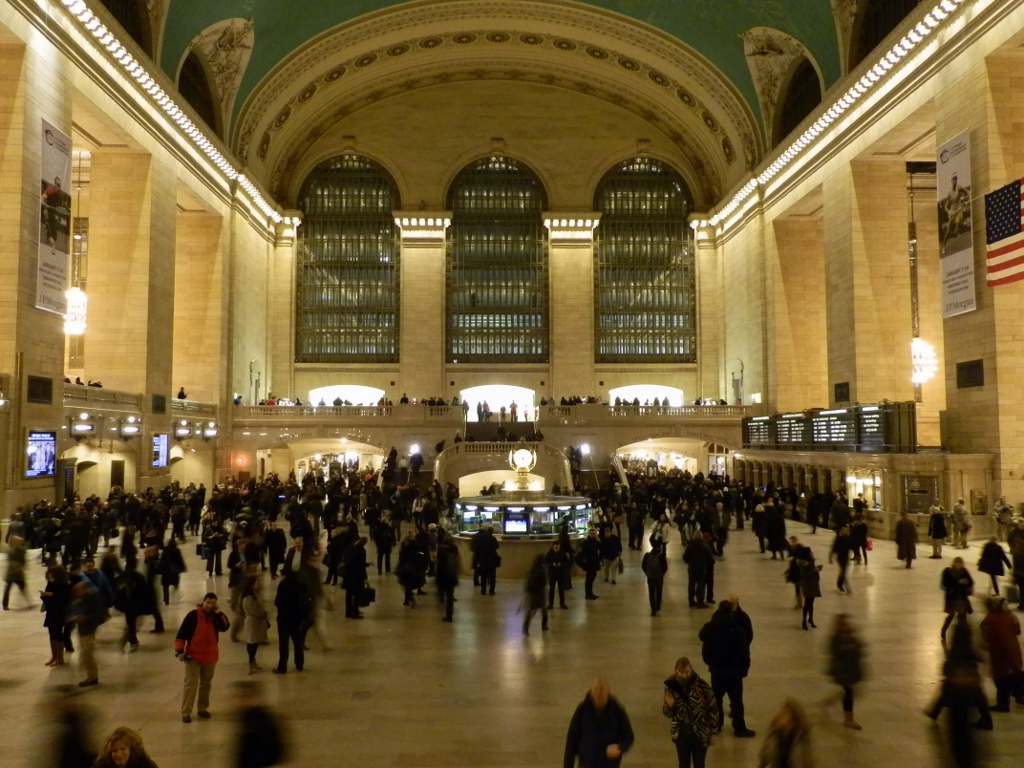 Interior of the Grand Central Terminal
Interior of the Grand Central Terminal
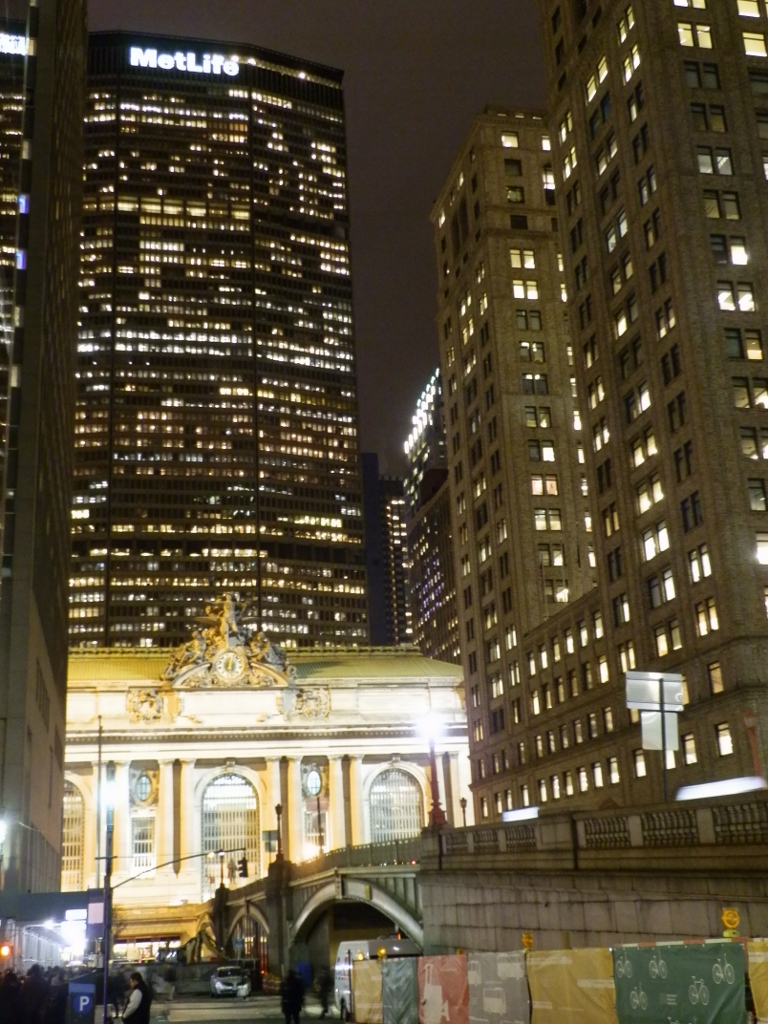 Grand Central Terminal at the foot of the MetLife Building
Grand Central Terminal at the foot of the MetLife Building
Over the next few days I was just spending time with my friends and then I went for a week-long vacation from vacation and for this I chose a proper Caribbean island.
Namely, when I was in New York during a winter once before, I accidently came across some very good offers for a short stay on some of the numerous Caribbean islands on the “last minute” basis. At that time I was not ready to go for summer holidays in the middle of winter for I had no summer clothes with me and I thought that it would be silly to start buying it all just for some 4 or 5 days in the tropics. However, this time around I was ready and already in Belgrade I had packed up everything I needed for high temperatures and the sea. I was thinking: “All I have to do now is come across a good offer.” But, this year, there seemed to be no good offers in sight. Quite the contrary, all the arrangements (transportation and accommodation) were just far too expensive for me and just as I thought that there would be no summer vacation for me this time around when I bumped into something great – a low-cost airfare.
As it happened, one European low cost airline company was flying from the JFK airport (which suits me most when in New York) to Martinique – a French territory in the Caribbean Sea. So, right away I bought a round-trip ticket for a week, just to be sure I would have the transportation, and then I started to look for the accommodation, too. It was a bit problematic since the hotels were again just far too expensive, while private accommodation was not cheap either. Then I started to look at a site at which I had been present for years and where “members” sometimes offer free accommodation. I use that site from time to time when I travel somewhere, not necessarily because of any free accommodation, but more as a chance to contact somebody local and to possibly have a coffee together. It can be interesting.
However, this time it was quite important for me to find some acceptable place where I could sleep and so I asked a woman from that “club” if she knew of “some favourably priced and decent accommodation.” What I wanted to say in fact was: “something cheap, without being a dump.” As it turned out, she offered me to stay in a room at her place, while the price was what I would pay for a room at a good hotel for half a day. Sold!